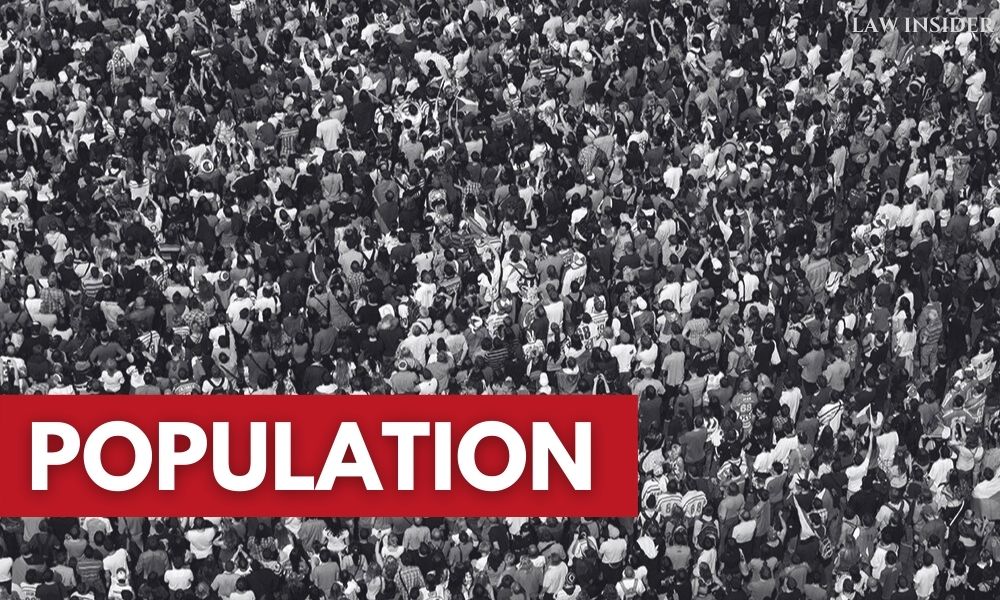By Pooja Bhakar
“UP prepares population control bill draft, proposes incentives for those following two-child policy” Headlines all over the news trending. Chief Minister Yogi Aditayanath brought up the draft bill for population control on 10th July 2021.
Population growth was always a matter of concern. Increasing population can affect a lot of things drastically, considering this many steps have been taken by the government of many countries as well as by India. But did that help? Did we have achieved any thing yet? How far we have to go? What all this bill is about? What will be its effect? Thousands of questions revolving around us. Let’s try to figure some of the questions and understand about the bill in detail through this article.
Population- matter of concern?
Basically population is a distinct group of individuals, whether that group comprises a nation or a group of people with a common characteristic. In statistics, a population is the pool of individuals from which a statistical sample is drawn for a study.
India has mostly been in the top of the list in terms of population, followed by China. According to unique identification Aadhar India, update December 2020, by mid of the year 2020 the projected population was 1,370,508,600. In 2021 it is estimated to be 1.39 Billion.
In population in India has increased gradually in the last few years.
- The current population of India in 2021 is 1,393,409,038, a 0.97% increase from 2020.
- The population of India in 2020 was 1,380,004,385, a 0.99% increase from 2019.
- The population of India in 2019 was 1,366,417,754, a 1.02% increase from 2018.
- The population of India in 2018 was 1,352,642,280, a 1.04% increase from 2017.
The brief overview about the Population density in India-
- The current population of India is 1,393,975,740 as of Wednesday, July 14, 2021, based on Worldometer elaboration of the latest United Nations data.
- India 2020 population is estimated at 1,380,004,385 people at mid year according to UN data.
- India population is equivalent to 17.7% of the total world population.
- India ranks number 2 in the list of countries (and dependencies) by population.
- The population density in India is 464 per Km2 (1,202 people per mi2).
- The total land area is 2,973,190 Km2 (1,147,955 sq. miles).
- 35.0 % of the population is urban (483,098,640 people in 2020).
On August 15, 2019, Prime Minister Modi had expressed in his speech concern over the population explosion taking place in the country. Modi had said, “India was the first country in the world to adopt family planning, a program for which was formed in 1949. The first family planning program was launched in 1952. In 1977, the government had formed a new population policy. People were given the option to accept it voluntarily. Now we are seeing that by 2024-25, India will leave China behind in terms of population. India’s population is 135 crore, while that of China is 142 crore. In terms of population, India will leave China behind in just a few years.”
What’s the concern if the population is raising aramingly?
Reasons why population control is necessary–
Environmental challenges: Population growth and economic development are contributing to many serious environmental problems in India. These include pressure on land, land/soil degradation, forests, habitat destruction and loss of biodiversity, changing consumption pattern, rising demand for energy, air pollution, global warming and climate change and water scarcity and water pollution.
Scarcity of land: India faces the most acute pressure on agricultural land. Today every million hectares of land supports 7.27 million people. Forty three percent of the land is under cultivation, one of the highest in the world. A change in land utilization pattern implies an increase or decrease in the proportion of area under different land uses at a point in two or more time periods.
Need of forest resources: With less than 2 percent of the world’s total forest area, the country supports 18 percent of its population. The total area under forests was 675.54 thousand square kilometers in 2001, which was 21 percent of the total geographical area, as against the National Forest Policy 1988 stipulation of a target of 33 percent. Even within this recorded area, only 416.81 thousand square kilometers, or only 12.68 percent of country’s total land area, comprises dense forest with a crown density of more than 40 percent, thus reflecting a qualitative decline of forests in the country. The effect of overpopulation on the world’s wildlife is also a major issue. As demand for land grows, so too does the destruction of natural habitats, such as forests.
Some scientists warn that if present trends continue, as many as 50% of the world’s wildlife species will be at risk of extinction. Data has also been collected to show that there is a direct link between increases in human population and decreases in the number of species on the planet.
Scarcity of Food grains: The per capita net availability of food grains in India indicates that, there is an availability or shortage of food grains in the country. Increasing trends in per capita availability of food grains is largely due to cereals. Availability does not mean accessibility because of lack of purchasing power among poor sections of society. However, better organizational management can assure better distribution and thus consumption when the availability is assured.
Faster climate change: Overpopulation directly correlates to climate change, particularly as larger nations, like China and India, continue to develop their industrial capacities. They now rank as two of the three largest contributors to emissions in the world, alongside the United States.
97% of the scientific community agrees that human activities are changing global temperatures. Larger populations may speed these changes up, especially if more is not done to reduce individual carbon footprints on a wide scale.
Increase in demand of Energy: The environmental effects due to increasing consumption levels of fuels like coal; lignite, oil and nuclear etc. are of growing concern to various researchers. The combustion of these fuels in industries has been a major source of pollution. A considerable amount of air pollution results from burning of fossil fuels. The resources for fossil fuels are also limited thus exploration of alternate energy resources would provide the way out.
Many more reasons can be explained for the reason why we have to be concerned about population growth. Now lets study about the state wise population in India.
State-wise population of India:
| State | Population | Area | Population Density |
| Uttar Pradesh | 199,812,341 | 240,928 km2 | 828/km2 |
| Maharashtra | 112,372,972 | 307,713 km2 | 365/km2 |
| Bihar | 103,804,637 | 94,163 km2 | 1,102/km2 |
| West Bengal | 91,347,736 | 88,752 km2 | 1,029/km2 |
| Madhya Pradesh | 72,597,565 | 308,245 km2 | 236/km2 |
Here we can easily identify that Uttar Pradesh is the most populous state of the country India. So its quite obvious to be concerned about population of the state by the government and formulating the steps required to be implemented to control the population of the state.
Is population control issue revolving in the Indian Judiciary system already?
Recently on 3rd July 2021, A plea has been filed before the Supreme Court seeking directions for framing of effective rules, regulations and guidelines to control population explosion, calling it the ‘root cause of more than 50% problems of India’.
Rakesh Sinha, Rajya Sabha MP and a member of the BJP, introduced the Population Regulation Bill, 2019, in July 2019. It suggested that two-children families where either spouse had undergone sterilisation would be eligible for several benefits including an additional increment in public sector jobs, housing subsidies, income tax rebate, travel subsidies, health insurance benefits and preference in admission to higher education institutions. Several benefits would be withdrawn from those who had more than two children after this bill was introduced, including reduced benefits under the Public Distribution System, loans at higher rates and reduced savings rates, the bill said.
A Population Control Bill introduced in 2016 in the Lok Sabha by Prahlad Singh Patel, currently India’s tourism minister, suggested the denial of all welfare benefits to those who had a third child after the bill was passed. The bill also required families to get official permission for a third child. It never came to vote, reported CNN in January 2019.
The Promotion of Two Child Norm Bill, 2015 and the Two Child Norm Bill, 2005, were also tabled by members of parliament Dr. Ramesh Pokhriyal and Dr T. Subbarami Reddy respectively. The latter had proposed a criminal sanction of five years of simple imprisonment and a fine of not less than Rs. 20,000.
In 2002, a government committee to review the working of the Constitution had recommended adding directive principle Article 47A which said: “Control of population: The State shall endeavour to secure control of population by means of education and implementation of small family norms.” However, this had not been done.
What is the reason for this bill?
“Poverty and illiteracy are major factors for population expansion. There is also a lack of awareness about population in certain communities and we therefore need community-centric awareness efforts,” said CM Yogi on this draft bill.
Explaining the reasons for bringing out the draft bill, the Commission headed by Justice Aditya Nath Mittal said- there were limited ecological and economic resources at hand in UP and it was necessary to control and stabilise the population, for the promotion of sustainable development with more equitable distribution.
According to a government spokesperson, the population policy will follow a five-pronged approach to population control and will also focus on improving health.
He also said that- It was stressed that Uttar Pradesh’s total fertility rate is 2.7 percent currently as opposed to how it ideally should be less than 2.1 percent. Most states have achieved the ideal total fertility rate, except for Uttar Pradesh and Bihar. On the other hand, efforts will be made to stabilize population by providing solutions for impotence and infertility, and reducing infant and maternal mortality rate through improved health facilities.

What does the Draft Bill says?
A Bill to revitalize efforts and provide for measures to control, stabilize and provide welfare to the population of the State by implementation and promotion of the two-child norm and for the matters connected therewith and incidental thereto.
On Worlds Population Day, Uttar Pradesh Government announced about the Population Control Bill,2021. The UP Population Control, Stabilization, and Welfare Draft Bill 2021- 30 has been passed under Uttar Pradesh State Law Commission UPSLC official website. As the name of the Bill explains that it includes control, stabilization and welfare of population.
- Multiple Birth out of Second Pregnancy (13)
- Adoption (section 14)
- Disability of the first or second child (section 15)
- Death of the child (section 16)
- Married couple expecting a child at the time of commencement of this Act (section 17)
Provisions mentioned in the Bill are:
- If a couple have a baby on 1.1.2021 and gave birth to their second child by 1.1.2023 then the couple is not under the contravention (violation) under this law.
- If any couple have a baby on 1.1.2021 and gives birth to two more babies in second pregnancy then also they are not under any contravention.
- If any couple have two babies from first pregnancy on 1.1.2021 and gave birth to two more babies out of from second pregnancy on 1.1.2023 then the couple is under contravention. This clearly means you will violate this policy of UP government.
- If any couple has no baby from their marriage and they adopted two children then the couple in not under any contravention.
- If couple had no children from their marriage but adopted more than two children then they are under contravention.
- If couple had two children out of from their marriage and adopted one child then they are not in under any contravention.
- If couple had two children and adopted two or more children then also they are under contravention of 2 child policy in UP.
Two child policy rules are:
- Under this policy who are not an government servant but follow the policy will get rebate on electricity bills, home loans, tax on houses etc.
- The bill has also limits the ration card unit to 4.
- Many incentives will be given to those government servants or employees who will follow 2 child policy. Also there has been incentives for couples who falls under Below poverty line.
- Incentives given under UP Birth Control Policy.
- Incentives for those Government employees who are following Two Child Policy norms:
- Soft loans for the construction will be given to you on minimal rates.
- Rebate on home loans, electricity charges etc.
- 2 additional increments will be given to the employee in their entire service line.
- Subsidy will be given to you on purchasing a land or building hose from DA and housing board.
- Free health care facility.
- Insurance coverage of the spouse.
- To female government employees there will be 12 month maternity leave with full salary.
- In employers Fund Contribution under pension policy there will be 3 % surge.
- Couple who belong from below poverty line and has only one child will also give attractive incentive.
- If it is a boy lum sum amount of money will be given to the couple of 80,000 Rupees.
- If it is a girl, lum sum amount of 1,00,000 will be given to the couple.
In short:
| Name of the Policy | UP Population Control, Stabilization and Welfare Bill 2021 |
| Draft Bill proposed | 11 July 2021 |
| 2 child Policy in UP Proposed by | State Law Commission, Uttar Pradesh (Vidhi Ayog) |
| Policy to be drafted | 19 July 2021 |
| Policy imposed on | Only on married couples |
| Official Website | upslc.upsdc.gov.in |
The Bill has enlisted incentives for those limiting their families to two children or less. Disincentives on non-adherence to the two-child norm have been also laid down.
The basic outlay of benefits debarred for the person with more than two children–
- Contest elections to the local authority or any body of the local self-government.
- Apply for government jobs under the State Government.
- Ineligible to get promotion in government services.
- Ineligible to receive any kind of government subsidy.
- Limit of ration card units up to four.
- Debarring from the benefits of government-sponsored welfare schemes.
Incentives
Public servants under the control of the state government who adopts the two-child norm by undergoing voluntary sterilization operation upon himself or spouse shall be given the following benefits-
- Two additional increments during the entire service.
- Subsidy towards the purchase of plot or house site or built house from housing Board Development Authority, as may be prescribed.
- Rebate on charges for utilities such as water, electricity, house tax, as may be prescribed;
- Maternity or the case may be, paternity leave for 12 months, with full salary and allowances;
- Free health care facility and insurance coverage to the spouse.
- 3% increase in the employers contribution fund under National Pension.
One-child norm:
- Free health care facilities & insurance coverage to the child till age 20;
- Preference to the single child in admission in all educational institutions;
- Free education up to the graduation level;
- Scholarship for higher studies in case of a girl child and preference to a single child in government jobs.
Steps to be taken by Government–
- It shall be the duty of the Government to introduce a compulsory subject relating to population control in all secondary schools.
- It shall be the duty of the government to ensure that contraceptives are available at reasonable rates at all sub-health centres in the State.
Objection raised on this draft Bill-
Vishwa Hindu Parishad has raised objections to the Bill, saying that “In a contracting population, the ratio between the working age and the dependent population gets disrupted. In an extreme case, the one-child policy would lead to a situation where there is only one working age adult to look after two parents and four grandparents. In China, which adopted the one-child policy in 1980, it was called the 1-2-4 phenomenon. To get over it, China had to relax its one-child policy.”
Chief Minister Nitish Kumar said that, “It was found after a lot of research work that the rate of reproduction comes down effectively if women are educated, Bihar has experimented with it by promoting education among the girls and achieved success. If it continued, the state would have negative growth of population after 2040.”
Leader of Opposition in the state Assembly Ram Govind Chowdury alleged that the state government was bringing in the bill to divert attention from law and order problems, as reported by PTI.
Samajwadi Party MP Shaqfiqur Rahman Barq described the bill as “election propaganda”. “They [the Bharatiya Janata Party] look at everything from a political angle,” he said. “They just want to win elections and don’t take any decision in the interest of the people. Since the assembly election is coming, they are concerned about it. By the grace of Allah, we will not let them win.”
Is population control method tried before?
In July 2019, Rajya Sabha MP Rakesh Sinha had introduced the proposed Population Control Bill, 2019, the upper house of the Parliament, with the purpose to control the population growth in India. The proposed bill was signed by 125 Members of Parliament (MP) and is yet to become an act of law.
This new Bill is different because it has the potential to systematically alter India’s social fabric itself. In effect, the proposed text offers to perpetuate a longstanding anxiety around India’s population growth, but takes on a particularly dangerous turn by attaching reproductive lives and children to direct exclusion from the polity.
On 7 February 2020, the Constitution (Amendment) Bill, 2020 was introduced in the Rajya Sabha by Anil Desai, a Shiv Sena MP. Desai proposed to amend Article 47A of the Constitution of India to introduce a two-child policy per couple. The 2020 bill also aims to incentivize its adoption through various measures such as educational benefits, taxation cuts, home loans, free healthcare, and better employment opportunities.
What exactly was Bill about?
1. The Bill was first introduced in 2019 as the Population Control Bill, 2019 or, Population Regulation Bill, 2019 in the Rajya Sabha in July of last year.
2. Rakesh Sinha, another MP of Rajya Sabha introduced the bill basically to start controlling the population growth in India.
3. The bill is not yet a law, which is why Anil Agarwal is imploring the PM to get it started to become a law. The initially proposed bill was signed by 125 MPs.
In February of 2020, a Shiv Sena MP, Anil Desai, brought up the Constitution (Amendment) Bill, 2020 that would amend the Article 47A of the Constitution of India.
4. This new 2020 bill puts forth a two-child only policy.
5. If the couple adheres to this policy they would be given many government-based incentives.
6. These incentives can include educational benefits, taxation cuts, home loans, free healthcare, and better employment opportunities to name a few.
7. The 2019 Bill by Sinha had proposed that couples who had more than 2 kids should be debarred from contesting elections, denial of government jobs, financial benefits and even food under government’s public distribution system.
8. One section of the 2020 Amendment Bill also proposed that the central government should give preference to candidates who have two or less than two children.
9. Another section of the 2020 Bill asked for all employees of the Central Government to submit an undertaking in writing that they shall not have more than two children. Employees who already have more than two children shall submit an undertaking that they will not procreate any more children.
10. A section of the 2020 Bill stated that a married couple who are below the poverty line, having only one child also agree to get sterilised, then they shall be eligible to get Rs. 60,000 if their child is a boy and Rs. 1 lakh if the child is a girl, from the central government. This child would also get preference while getting admission in institutes of higher education and during the selection of a government job.
Rajasthan also passed an Act in 1994 that stated that if an individual chose to have more than two children, he/she would be automatically disqualified from contesting any election, either as a panch or member. The policy has been relaxed since, in cases where families have disabled children. Similar laws have been enforced in various states across the country including Telangana, Andhra Pradesh, Gujarat, Uttarakhand and Odisha.
Maharashtra also bans people with more than two children from standing for elections, while also prohibiting them from obtaining government jobs. Women having more than two children are also ineligible for benefits from the Public Distribution System. In Karnataka, only candidates who have two or fewer children, as well as a ‘sanitary latrine’ in their residence, can contest in local elections.
Population Explosion concern over the world too?
China

In 1979, China famously introduced its controversial one-child policy to try to slow population growth amid concerns over the effect it would have on its plans for economic growth. Today, the world’s most populous country is facing the issue of major declines in birth rates.
The Lancet study predicts that China’s population will peak at 1.4 billion in four years’ time before nearly halving to 732 million by 2100.
Official data showed the country’s birth rate had fallen to its lowest level in 70 years in 2019.
Some fear that the country is a “demographic time bomb”, which will see a smaller working-age population having to support a bigger, retired population. As one of the world’s biggest economies, this would have global ramifications.
Concerns over China’s ageing population led the government to end the one-child policy in 2015, allowing couples to have two children. But while this sparked a brief increase in birth rates, it failed to reverse the trend long-term.
- What was China’s one-child policy?
The one-child policy has been blamed for a severe gender imbalance in the country, with males still outnumbering females by more than 30 million in 2019. This has, in part, been blamed on some couples opting for sex-selective abortions.
Experts also said that the easing of population restrictions was not accompanied by additional support for families, meaning many people could not afford more than one child.
Japan

Japan’s population will more than halve, from a peak of 128 million in 2017 to less than 53 million by the end of the century, the researchers behind the new Lancet study predict.
Japan already has the world’s oldest population and the highest rate of people over the age of 100.
This has put strain on the country’s workforce and the problem is only expected to worsen.
Official forecasts say elderly people will account for more than 35% of the population by 2040.
This, combined with a low fertility rate of just 1.4 births per woman, means that the number of people able to fill jobs in the country is in decline.
Countries need a fertility rate of about 2.1 births to maintain existing population sizes.
While Japan has traditionally been wary of immigration, it has eased rules in recent years in a bid to deal with the issue.
However, there have been widespread reports of exploitation of migrant workers.
Iran

Iran is also expected to see its population significantly decline by the end of the century.
The country experienced a population boom after the Islamic Revolution in 1979, but went on to implement an effective population control policy.
Last month, the health ministry warned that annual population growth had dropped below 1%. Without action, it said it could become one of the world’s oldest countries in the next 30 years.
State-run news agency Irna has reported that marriage and children within marriage are both in decline, largely because of economic hardship.
In an effort to boost its population, Iran ruled last month that vasectomies can no longer be carried out at state-run medical centres and contraceptives will only be offered to women whose health might be at risk.
Italy

The Italian population is also expected to more than halve, from 61 million in 2017 to 28 million by the end of the century, according to the Lancet study.
Like Japan, Italy is known for its ageing population. More than 23% of people there were over the age of 65 in 2019, according to World Bank data.
In 2015, the government launched a programme offering an €800 (£725) payment per couple per birth to try to boost fertility rates.
- How do countries fight falling birth rates?
However, they still remain among the lowest rates in the European Union.
The country also sees high rates of emigration. About 157,000 people left the country in 2018, according to official data.
Several towns have introduced their own schemes to try to boost local populations and their economies. This includes selling homes for just €1 or even paying people to live in under-populated communities – if they set up a business.
Towns with dwindling populations in Spain – which is also projected to see its population more than halve – have launched similar schemes.
Solution for population control
Sex Education– A lack of sex education has led to overpopulation issues in many countries. The issue is so pronounced that the United Nations Population Fund (UNFPA) is calling for improvements to be made, particularly in poorer areas of the world. Better education will help people understand more about the potential consequences of having sex as they relate to child birth. It will also do away with many of the myths that surround the sexual act and introduce scientifically-proven methods of birth control.
Birth control measures– Access to birth control must go hand-in-hand with better sex education. After all, without it people cannot put what they have learned into practice.The World Health Organization (WHO) states that 225 million women who are living in the developing countries would prefer to postpone giving birth but are not using any form of contraception. Many organizations, such as the American Congress of Obstetricians and Gynecologists (ACOG), also support improving access to contraceptives.
Knowledge to women and girls– Where women and girls are empowered to choose what happens to their bodies and lives, fertility rates plummet. Empowerment means freedom to pursue education and a career, economic independence, easy access to sexual and reproductive healthcare, and ending horrific injustices like child marriage and gender-based violence.
Reference-
UP Draft Population Control Bill up Population control bill draft
Population Density (macrotrends.net)
State population( indiatoday.in)
Bill (images.assettype.com)

